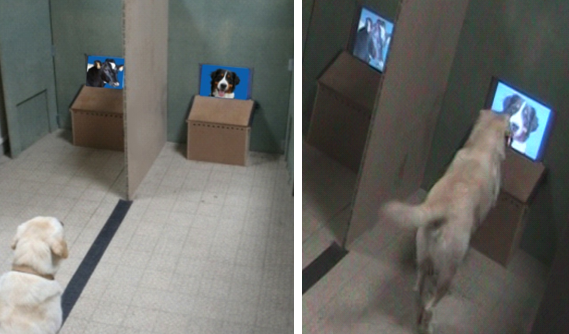Dogs Can Spot Fellow Furballs in a Crowd

Dogs can pick out the faces of other dogs in a virtual lineup of humans and other animals, a new study shows.
And it doesn't matter if it's a German shepherd looking at a standard poodle. Dogs still know who's one of their own, researchers say.
Previous research has shown that many animals, from macaques to sheep, are better at recognizing images of another member of their own species than picking out images of individuals from different species.
In the new study, scientists wanted to test if this phenomenon held true for the domestic dog, which is far more variable in size, shape and behavior than any other living mammal. Regardless of how different dog breeds might seem, all dogs belong to the same species, Canis lupus familiaris.
For the study, a team of French researchers put nine pet dogs in front of two side-by-side computer screens that showed images of faces. In each pair of pictures, one showed a dog's face (various breeds and cross-breeds were featured) and the other showed non-dog animals, including cows, horses, cats, birds and humans.
The dogs were trained to choose one of the pictures, by going over to a given screen and putting a paw in front of the image when the experimenter gave a signal. Over the course of dozens of trials, the dogs showed a preference for the dog faces, and they seemed to lump all dogs into the same category, regardless of whether they were looking at a Chihuahua or a mastiff, the researchers said.
"The fact that dogs are able to recognize their own species visually, and that they have great olfactory discriminative capacities, insures that social behavior and mating between different breeds is still potentially possible," the researchers write. "Although humans have stretched the Canis familiaris species to its morphological limits, its biological entity has been preserved."
Get the world’s most fascinating discoveries delivered straight to your inbox.
The study, led by Dominique Autier-Dérian of France's National Veterinary School in Lyon, was detailed online this month in the journal Animal Cognition.
Follow LiveScience on Twitter @livescience. We're also on Facebook & Google+.



